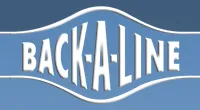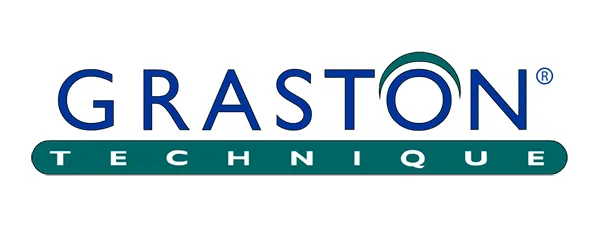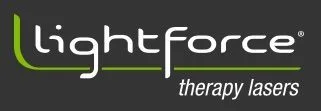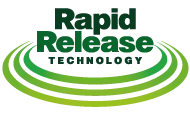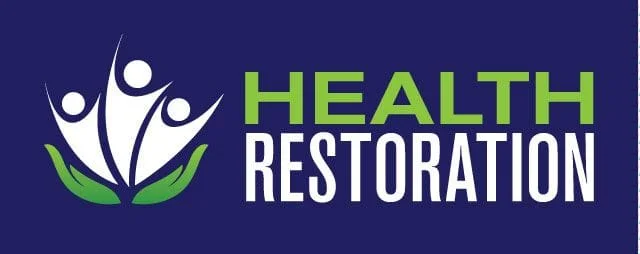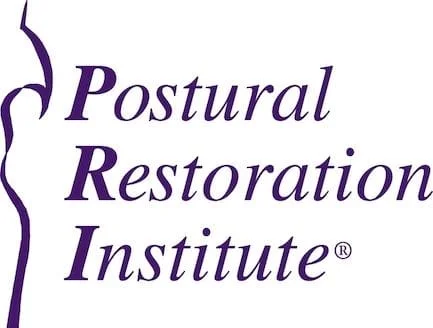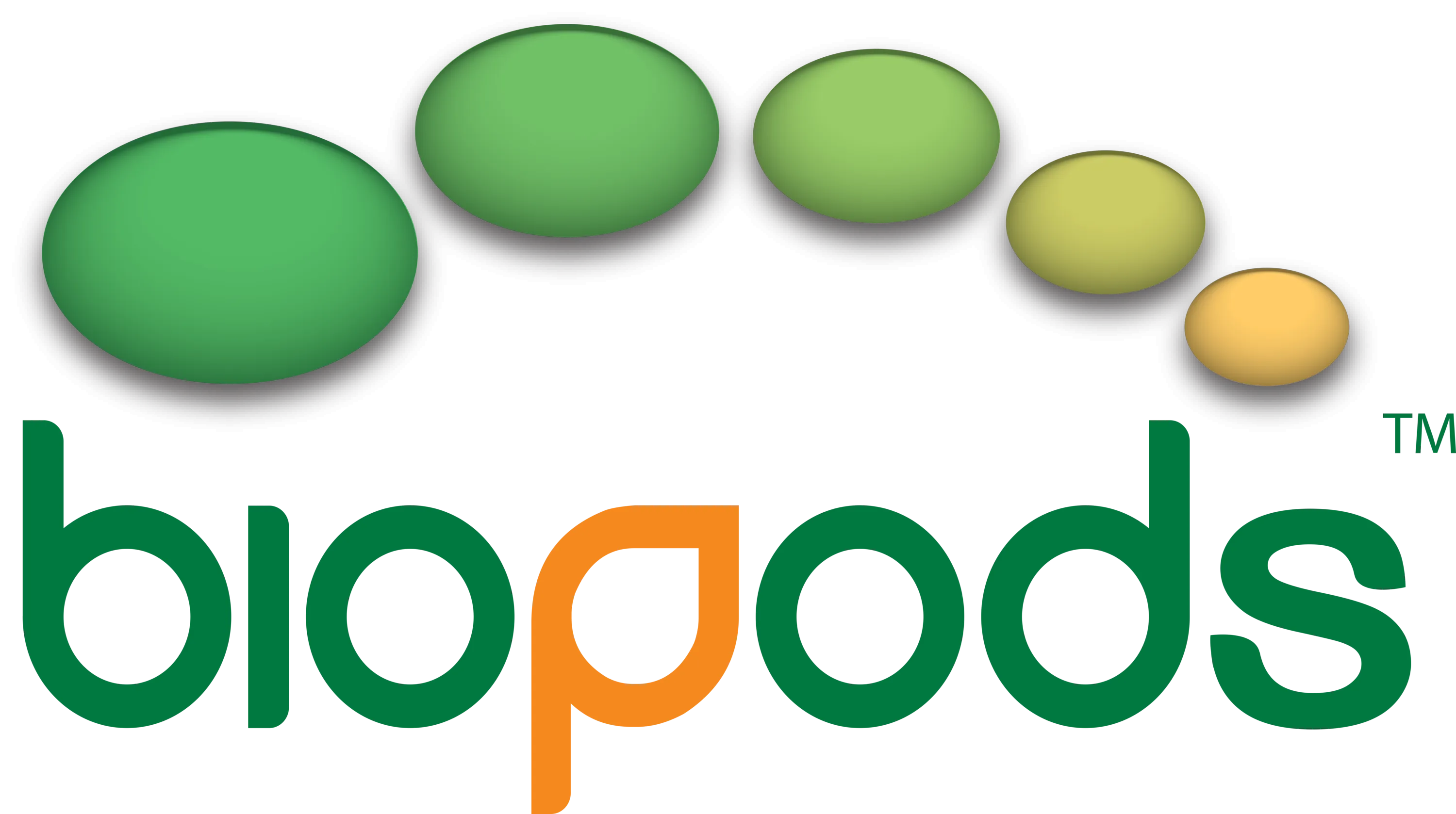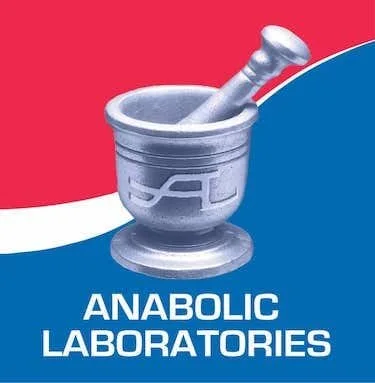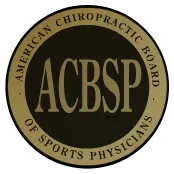by K.D. Christensen DC, CCSP, DACRB
The Achilles tendon transmits the forces of the large gastrocnemius/soleus muscle group from the lower leg into the foot. It
inserts into the heel at the most posterior aspect of the calcaneus. Conditions such as tendinitis and tears of this tendon will require appropriate rehabilitation in order to prevent continuing problems and disability. Rehab of the Achilles tendon is easily performed in a chiropractic office, since it doesn’t require expensive special equipment or extraordinary time commitments.
Biomechanical Function
Most injuries of the Achilles tendon begin with the report of a recent acute injury; but have actually developed gradually, over a
period of weeks or months. These are “overuse” or “misuse” conditions, and are caused by excessive and/or repetitive motion, often with poor biomechanics. The end result is a microtrauma injury – the body is unable to keep up with the repair and re-strengthening needs, so the tissue begins to fail and becomes symptomatic. If it is not very painful (or when the pain is eliminated by pain-killing drugs), continued stress can eventually lead to complete failure, with a resulting acute tear of the tendon.
The Achilles tendon insertion on the calcaneus is medial to the axis of the subtalar joint, making the calf muscles the most powerful supinators of the subtalar joint. (1) Therefore, when excessive pronation occurs, eventually the tendon undergoes overuse degeneration and inflammation. Researchers at the University of British Columbia described how “pronation generates an obligatory internal tibial rotation which tends to draw the Achilles tendon medially. Through slow motion, high-speed cinematography we have seen that pronation produces a whipping action or bowstring effect in the Achilles
tendon. This whipping action, when exaggerated, may contribute to microtears in the tendon, particularly in its medial aspect, and initiate an inflammatory response.” (2) These investigators believe that the control of functional overpronation with corrective orthotic devices is a necessary treatment for most patients with Achilles tendinitis.
Impaired circulation may be a contributing factor to Achilles tendon overuse injuries, especially with tendon tears. The same researchers speculate that “in individuals who overpronate, the conflicting internal and external rotatory forces imparted to the tibia by simultaneous pronation and knee extension may blanch or wring out vessels in the tendon and peritendon causing vascular impairment and subsequent degenerative changes in the Achilles tendon.” (Fig. 1) This “region of relative avascularity” extends from 2 to 6 cm above the insertion into the calcaneus, and is a common site of rupture of the Achilles tendon. This makes it especially important to ensure good blood flow during the healing of this condition.
Achilles Tendinitis/Tendinosis
It’s not surprising that abnormal biomechanics of the foot and ankle can cause problems with the largest tendon in the leg. Symptoms are usually described as diffuse pain in or around the back of the ankle (from the calf to the heel). The pain is aggravated by activity, especially uphill running or climbing stairs, and relieved somewhat by wearing higher-heeled shoes or boots. Palpation will find a tender thickening of the peritendon, and there may be crepitus during plantar and dorsiflexion. Often, a recent increase in activity levels (such as more stair-climbing) or a change in footwear is reported by the patient.
Macroscopically, overused Achilles tendon tissues examined at surgery are dull, slightly brown, and soft, in comparison to normal tendon tissue, which is white, glistening, and firm. (3) There is a loss of collagen continuity and an increase in ground substance and cellularity, which is due to fibroblasts and myofibroblasts, and not inflammatory cells. (4) This is the reason that
anti-inflammatory strategies (such as NSAIDS drugs and corticosteroid injections) are not indicated for these conditions, and actually may interfere with tendon repair. (5) We now know that the condition we usually have described as “tendinitis” is actually better understood as “tendinosis,” and is not due to inflammation, but an underlying degeneration of collagen tissues in response to mechanical overuse. (6) This “new paradigm” will help to guide our management of all tendon problems, and provide more effective rehabilitation for Achilles tendons.
Rehabilitation of the Achilles Tendon
When an injury is acute, an initial period of relative rest is needed. Occasionally, the weakened tissues will tear through, resulting in a ruptured Achilles tendon. This may require surgical repair and a period of rest before rehabilitation can begin. During this period, though, exercise of the opposite ankle should be encouraged. Vigorous exercise of the uninvolved contralateral ankle muscles produces a neurological stimulus in the injured muscles (called the “cross-over
effect”), and helps to prevent atrophy. (7) Initial treatment should also include heel lifts to reduce the strain on the Achilles
tendon, and cross-fiber friction to improve circulation. Complete return to function will then require attention to range of motion, functional strength, and orthotic support.
Range of motion. In addition to appropriate foot and ankle adjustments, stretching of the tight and shortened gastrocnemius/soleus muscle complex is a necessary part of Achilles tendon rehabilitation.
Gentle stretching should be started early, putting a linear stress on the tendons and stimulating connective tissue repair. The standard is the “runner’s stretch,” performed against a wall (Fig. 2). Patients with tightness and pronation will often allow the foot to flare outwards while stretching, which forces the medial arch to drop. This tendency must be carefully corrected, with the foot positioned straight ahead and the medial arch kept elevated. (8) Even better is to perform the stretches with corrective orthotics in place.
Functional strength. Isotonic strengthening exercises that focus on the eccentric (negative) component have been shown to improve the healing of tendons and accelerate return to sports participation (Fig. 3). (9) These exercises should be progressed to closed-chain, heavily-loaded eccentric exercises, in order to stimulate collagen fiber re-orientation and strengthening. (10) The patient is instructed to stand on the edge of a stair, do a toe raise up, then rapidly drop the involved heel as far as possible, returning by pushing back up with the un-involved leg.
Orthotic support. A shoe insert made of viscoelastic material will help decrease the amount of stress on the feet, legs, and
back during running. (11) Orthotics have been found to be very useful in the long-term improvement of running biomechanics. (12) While there is still controversy regarding exactly how and why orthotics are so useful, there is solid empirical evidence of their
benefits to runners, for both treatment and prevention of overuse injuries. (13) As described above, most Achilles tendon
problems develop from poor foot and ankle biomechanics, and control of pronation is needed to prevent recurrent injuries. (14) Custom-made, flexible orthotics are now available that can support the hindfoot, midfoot, and forefoot, thereby providing biomechanical control throughout the entire gait cycle.
Outcome Management. The common outcome assessment tool in regards to Achilles tendon management available to chiropractors is the Ankle Grading Questionnaire (Mazur et al, 1979). This is a 100 point index awarded based upon the following criteria:
Pain – 50 points
Function – 6 points
Walking – 6 points
Support – 6 points
Hills (up) – 3 points
Hills (down)- 3 points
Stairs (up) – 3 points
Stairs (down) 3 points
Toe Rising – 5 points
Running – 5 points
ROM – 10 points
This questionnaire and others requires permission from the copyright owners to utilize which has been obtained and available thru FCER (800-622-6309, see www.OutcomesAssessment.org).
Conclusion
Achilles tendon injuries can be successfully rehabilitated conservatively. Steroid injections and casting are seldom used these
days. Once the local inflammation has been controlled, improved blood flow to the region of relative avascularity is necessary. Correct stretching and strengthening exercises can be demonstrated and monitored in the office. One of the most important factors for the long term is to reduce any tendency to pronate excessively. In addition to custom-fitted orthotics, all runners should be encouraged to wear well-designed shoes that provide good heel stability with a small amount of additional heel lift. This helps to prevent Achilles tendon problems, and is especially important in athletes running for more than a few miles at a time.
References
1. Subotnick SI. Sports Medicine of the Lower Extremity. New York: Churchill Livingstone; 1989. 475.
2. Clement DB et al. Achilles tendinitis and peritendinitis: etiology and treatment. Am J Sports Med 1984; 12:179-184.
3. Astrom M, Rausing A. Chronic achilles tendinopathy: survey of
surgical and histopathologic findings. Clin Orthop 1995; 316:151-164.
4. Khan KM et al. Histopathology of common tendinopathies: update and
implications for clinical management. Sports Med 1999; 27:393-408.
5. Almekinders LC, Temple JD. Etiology, diagnosis, and treatment of
tendonitis: an analysis of the literature. Med Sci Sports Exerc 1998;
30:1183-1190.
6. Khan KM et al. Overuse tendinosis, not tendinitis. Part 1: a new
paradigm for a difficult clinical problem. Phys Sportsmed 2000;
28:38-48.
7. Hertling D, Kessler RM. Management of Common Musculoskeletal Disorders. 2nd ed. Philadelphia: JB Lippincott; 1990. 334.
8. Ninos J. Chain reaction: a tight gastroc-soleus group. Strength Cond J 2001; 23:60-61.
9. Niesen-Vertommen Sl et al. The effect of eccentric versus
concentric exercise in the management of Achilles tendinitis. Clin J
Sport Med 1992; 2:109-113.
10. Alfredson H et al. Heavy-load eccentric calf muscle training for
the treatment of chronic Achilles tendinosis. Am J Sports Med 1998;
26:360-366.
11. Schwellnus MP, Jordaan G, Noakes TD. Prevention of common overuse
injuries by the use of shock absorbing insoles. Am J Sports Med 1990;
18:636-641.
12. Gross ML, Napoli RC. Treatment of lower extremity injuries with orthotic shoe inserts. Sports Med 1993; 15:66-70.
13. Gross NL, Davlin LB, Evanski PM. Effectiveness of orthotic shoe
inserts in the long-distance runner. Am J Sports Med 1991; 19:409-412.
14. Busseuil C et al. Rearfoot-forefoot orientation and traumatic risk for runners. Foot & Ankle Intl 1998; 19:32-37.
Fig. 1. Achilles tendon circulation
Fig. 2. “Runners stretch” against wall
Fig. 3. Isotonic stretching (plantar flexion)
The Achilles tendon transmits the forces of the large gastrocnemius/soleus muscle group from the lower leg into the foot. It
inserts into the heel at the most posterior aspect of the calcaneus. Conditions such as tendinitis and tears of this tendon will require appropriate rehabilitation in order to prevent continuing problems and disability. Rehab of the Achilles tendon is easily performed in a chiropractic office, since it doesn’t require expensive special equipment or extraordinary time commitments.
Biomechanical Function
Most injuries of the Achilles tendon begin with the report of a recent acute injury; but have actually developed gradually, over a
period of weeks or months. These are “overuse” or “misuse” conditions, and are caused by excessive and/or repetitive motion, often with poor biomechanics. The end result is a microtrauma injury – the body is unable to keep up with the repair and re-strengthening needs, so the tissue begins to fail and becomes symptomatic. If it is not very painful (or when the pain is eliminated by pain-killing drugs), continued stress can eventually lead to complete failure, with a resulting acute tear of the tendon.
The Achilles tendon insertion on the calcaneus is medial to the axis of the subtalar joint, making the calf muscles the most powerful supinators of the subtalar joint. (1) Therefore, when excessive pronation occurs, eventually the tendon undergoes overuse degeneration and inflammation. Researchers at the University of British Columbia described how “pronation generates an obligatory internal tibial rotation which tends to draw the Achilles tendon medially. Through slow motion, high-speed cinematography we have seen that pronation produces a whipping action or bowstring effect in the Achilles
tendon. This whipping action, when exaggerated, may contribute to microtears in the tendon, particularly in its medial aspect, and initiate an inflammatory response.” (2) These investigators believe that the control of functional overpronation with corrective orthotic devices is a necessary treatment for most patients with Achilles tendinitis.
Impaired circulation may be a contributing factor to Achilles tendon overuse injuries, especially with tendon tears. The same researchers speculate that “in individuals who overpronate, the conflicting internal and external rotatory forces imparted to the tibia by simultaneous pronation and knee extension may blanch or wring out vessels in the tendon and peritendon causing vascular impairment and subsequent degenerative changes in the Achilles tendon.” (Fig. 1) This “region of relative avascularity” extends from 2 to 6 cm above the insertion into the calcaneus, and is a common site of rupture of the Achilles tendon. This makes it especially important to ensure good blood flow during the healing of this condition.
Achilles Tendinitis/Tendinosis
It’s not surprising that abnormal biomechanics of the foot and ankle can cause problems with the largest tendon in the leg. Symptoms are usually described as diffuse pain in or around the back of the ankle (from the calf to the heel). The pain is aggravated by activity, especially uphill running or climbing stairs, and relieved somewhat by wearing higher-heeled shoes or boots. Palpation will find a tender thickening of the peritendon, and there may be crepitus during plantar and dorsiflexion. Often, a recent increase in activity levels (such as more stair-climbing) or a change in footwear is reported by the patient.
Macroscopically, overused Achilles tendon tissues examined at surgery are dull, slightly brown, and soft, in comparison to normal tendon tissue, which is white, glistening, and firm. (3) There is a loss of collagen continuity and an increase in ground substance and cellularity, which is due to fibroblasts and myofibroblasts, and not inflammatory cells. (4) This is the reason that
anti-inflammatory strategies (such as NSAIDS drugs and corticosteroid injections) are not indicated for these conditions, and actually may interfere with tendon repair. (5) We now know that the condition we usually have described as “tendinitis” is actually better understood as “tendinosis,” and is not due to inflammation, but an underlying degeneration of collagen tissues in response to mechanical overuse. (6) This “new paradigm” will help to guide our management of all tendon problems, and provide more effective rehabilitation for Achilles tendons.
Rehabilitation of the Achilles Tendon
When an injury is acute, an initial period of relative rest is needed. Occasionally, the weakened tissues will tear through, resulting in a ruptured Achilles tendon. This may require surgical repair and a period of rest before rehabilitation can begin. During this period, though, exercise of the opposite ankle should be encouraged. Vigorous exercise of the uninvolved contralateral ankle muscles produces a neurological stimulus in the injured muscles (called the “cross-over
effect”), and helps to prevent atrophy. (7) Initial treatment should also include heel lifts to reduce the strain on the Achilles
tendon, and cross-fiber friction to improve circulation. Complete return to function will then require attention to range of motion, functional strength, and orthotic support.
Range of motion. In addition to appropriate foot and ankle adjustments, stretching of the tight and shortened gastrocnemius/soleus muscle complex is a necessary part of Achilles tendon rehabilitation.
Gentle stretching should be started early, putting a linear stress on the tendons and stimulating connective tissue repair. The standard is the “runner’s stretch,” performed against a wall (Fig. 2). Patients with tightness and pronation will often allow the foot to flare outwards while stretching, which forces the medial arch to drop. This tendency must be carefully corrected, with the foot positioned straight ahead and the medial arch kept elevated. (8) Even better is to perform the stretches with corrective orthotics in place.
Functional strength. Isotonic strengthening exercises that focus on the eccentric (negative) component have been shown to improve the healing of tendons and accelerate return to sports participation (Fig. 3). (9) These exercises should be progressed to closed-chain, heavily-loaded eccentric exercises, in order to stimulate collagen fiber re-orientation and strengthening. (10) The patient is instructed to stand on the edge of a stair, do a toe raise up, then rapidly drop the involved heel as far as possible, returning by pushing back up with the un-involved leg.
Orthotic support. A shoe insert made of viscoelastic material will help decrease the amount of stress on the feet, legs, and
back during running. (11) Orthotics have been found to be very useful in the long-term improvement of running biomechanics. (12) While there is still controversy regarding exactly how and why orthotics are so useful, there is solid empirical evidence of their
benefits to runners, for both treatment and prevention of overuse injuries. (13) As described above, most Achilles tendon
problems develop from poor foot and ankle biomechanics, and control of pronation is needed to prevent recurrent injuries. (14) Custom-made, flexible orthotics are now available that can support the hindfoot, midfoot, and forefoot, thereby providing biomechanical control throughout the entire gait cycle.
Outcome Management. The common outcome assessment tool in regards to Achilles tendon management available to chiropractors is the Ankle Grading Questionnaire (Mazur et al, 1979). This is a 100 point index awarded based upon the following criteria:
Pain – 50 points
Function – 6 points
Walking – 6 points
Support – 6 points
Hills (up) – 3 points
Hills (down)- 3 points
Stairs (up) – 3 points
Stairs (down) 3 points
Toe Rising – 5 points
Running – 5 points
ROM – 10 points
This questionnaire and others requires permission from the copyright owners to utilize which has been obtained and available thru FCER (800-622-6309, see www.OutcomesAssessment.org).
Conclusion
Achilles tendon injuries can be successfully rehabilitated conservatively. Steroid injections and casting are seldom used these
days. Once the local inflammation has been controlled, improved blood flow to the region of relative avascularity is necessary. Correct stretching and strengthening exercises can be demonstrated and monitored in the office. One of the most important factors for the long term is to reduce any tendency to pronate excessively. In addition to custom-fitted orthotics, all runners should be encouraged to wear well-designed shoes that provide good heel stability with a small amount of additional heel lift. This helps to prevent Achilles tendon problems, and is especially important in athletes running for more than a few miles at a time.
References
1. Subotnick SI. Sports Medicine of the Lower Extremity. New York: Churchill Livingstone; 1989. 475.
2. Clement DB et al. Achilles tendinitis and peritendinitis: etiology and treatment. Am J Sports Med 1984; 12:179-184.
3. Astrom M, Rausing A. Chronic achilles tendinopathy: survey of
surgical and histopathologic findings. Clin Orthop 1995; 316:151-164.
4. Khan KM et al. Histopathology of common tendinopathies: update and
implications for clinical management. Sports Med 1999; 27:393-408.
5. Almekinders LC, Temple JD. Etiology, diagnosis, and treatment of
tendonitis: an analysis of the literature. Med Sci Sports Exerc 1998;
30:1183-1190.
6. Khan KM et al. Overuse tendinosis, not tendinitis. Part 1: a new
paradigm for a difficult clinical problem. Phys Sportsmed 2000;
28:38-48.
7. Hertling D, Kessler RM. Management of Common Musculoskeletal Disorders. 2nd ed. Philadelphia: JB Lippincott; 1990. 334.
8. Ninos J. Chain reaction: a tight gastroc-soleus group. Strength Cond J 2001; 23:60-61.
9. Niesen-Vertommen Sl et al. The effect of eccentric versus
concentric exercise in the management of Achilles tendinitis. Clin J
Sport Med 1992; 2:109-113.
10. Alfredson H et al. Heavy-load eccentric calf muscle training for
the treatment of chronic Achilles tendinosis. Am J Sports Med 1998;
26:360-366.
11. Schwellnus MP, Jordaan G, Noakes TD. Prevention of common overuse
injuries by the use of shock absorbing insoles. Am J Sports Med 1990;
18:636-641.
12. Gross ML, Napoli RC. Treatment of lower extremity injuries with orthotic shoe inserts. Sports Med 1993; 15:66-70.
13. Gross NL, Davlin LB, Evanski PM. Effectiveness of orthotic shoe
inserts in the long-distance runner. Am J Sports Med 1991; 19:409-412.
14. Busseuil C et al. Rearfoot-forefoot orientation and traumatic risk for runners. Foot & Ankle Intl 1998; 19:32-37.
Fig. 1. Achilles tendon circulation
Fig. 2. “Runners stretch” against wall
Fig. 3. Isotonic stretching (plantar flexion)







